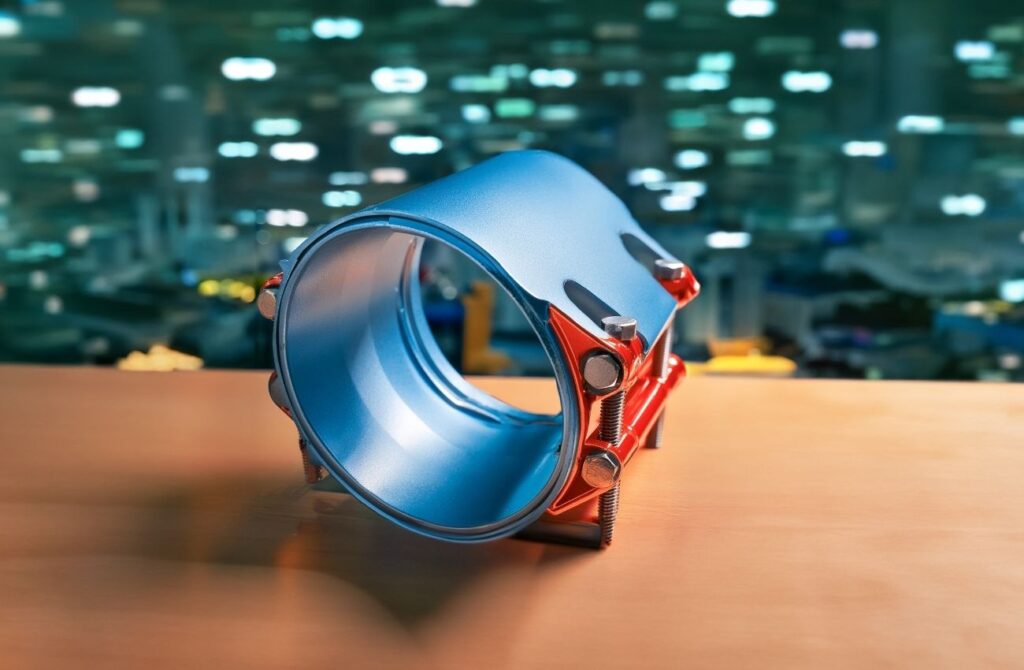A repair clamp is a tool used to temporarily or permanently repair damages such as cracks or holes in pipelines. It is ideal for use in various installations such as water, natural gas, and oil pipelines. In this article, we will discuss what a repair clamp is, how it is used, and the advantages it offers.
What is a Repair Clamp?
A repair clamp is a repair tool designed to temporarily or permanently fix damaged pipes. Made from various materials, usually including stainless steel and flexible materials like rubber, repair clamps come in different sizes to fit various pipe diameters.
Features of Repair Clamps
- Durability: Resistant to high pressure and harsh environmental conditions.
- Flexibility: Compatible with various pipe diameters and materials.
- Ease of Application: Quick and practical installation without the need for special tools.
How to Use a Repair Clamp?
Using a repair clamp involves several steps to ensure effective sealing and provide a long-term solution for pipeline issues. Here’s a detailed explanation of these steps:
1- Damage Assessment
First, carefully inspect the pipe to identify the damaged area that needs repair. Look for signs of leakage or physical damage (such as cracks or holes). Determine the extent of the damage.
2- Preparation
Clean the damaged area thoroughly by wiping off dirt, oil, rust, and other debris with a damp cloth or an appropriate cleaner. This step enhances the clamp’s adhesion and sealing performance. Ensure the pipe’s cleaned surface is smooth and even before proceeding with the application.
3- Applying the Clamp
Place the repair clamp directly over the damaged area. Make sure the clamp fully encircles the pipe and covers the cracked or broken surface. Ensure the clamp is centered and that both sides are evenly distributed around the pipe. This optimizes pressure distribution and enhances sealing performance.
4- Tightening
Tighten the screws or fasteners on the clamp to secure it tightly to the pipe. This is usually done with a wrench. Tighten the screws in a cross pattern to ensure even pressure distribution. Ensure all screws are equally tightened before reactivating the pipeline. Proper tightening guarantees the clamp exerts uniform pressure on the pipe, providing maximum sealing.
5- Testing
Finally, after the repair, return the pipeline to its normal operating pressure and carefully inspect the repaired area. Check for any signs of leakage. If any part of the clamp has loosened or shifted, retighten as necessary. Additionally, periodic checks after application help identify potential loosening or leaks early on.
These steps should be followed meticulously to ensure the correct and safe use of the repair clamp.
When to Use a Repair Clamp?
Repair clamps play a critical role in various situations. Here are some common scenarios where these clamps are most frequently used:
Emergency Situations: When an unexpected leak or damage occurs in a pipeline, repair clamps provide a quick and effective solution. They enable rapid repairs, preventing more serious issues such as flooding.
Temporary Repairs: Sometimes, materials or equipment for permanent repairs may not be immediately available. Repair clamps offer an ideal temporary solution to keep pipelines safe and functional until permanent fixes can be made.
Maintenance of Old Pipelines: Over time, older pipelines may suffer from various damages. Repair clamps are used to quickly fix leaks and cracks in these aging systems, providing time to avoid costly pipe replacements.
Planned Maintenance and Overhaul Projects: During planned maintenance, potential weak spots in the system can be identified and preemptively repaired with clamps. This proactive approach helps prevent major failures and increases system reliability.
These scenarios highlight how versatile and indispensable repair clamps are. When it comes to pipeline management and maintenance, repair clamps provide a reliable solution in many situations.
If you are considering using repair clamps for your business or facilities, contact Inoxsu to quickly and effectively address malfunctions. Feel free to reach out to us with any questions or for more information.

